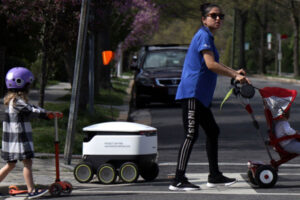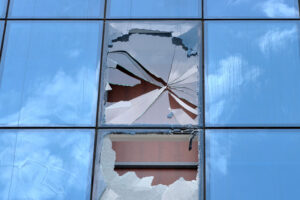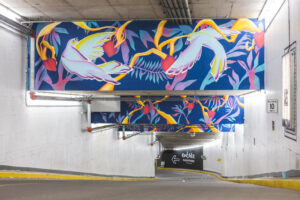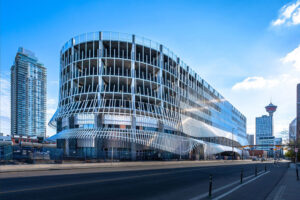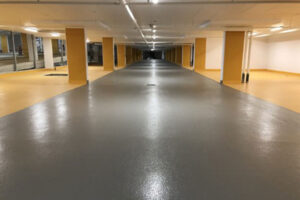By Bern Grush, Harmonize Mobility Inc., Toronto
It is expected that in some places and times service robots will be permitted to operate on public sidewalks, pathways, bicycle paths, and roadways. Will their introduction impact central business districts in our cities? Could they impact parking revenue? Will they create a need for new forms of public, shared-space monetization related to their use?
No one is surprised that we could expect some changes in the parking industry due to AVs, especially autonomous taxis for ridehailing. Ride hailing has already shown it can negatively impact parking demand.1 Surely, if the robotaxi arrives as promised — even cheaper and more reliable than ride-hailing — then parking demand would contract accordingly. But the continuous failure of promises from the autonomous passenger-vehicle industry since 2015 says this scenario is still on the far horizon — if anywhere.
Sidewalk-scaled delivery robots, also called personal delivery devices (PDDs), are far more likely to be in pervasive service in our cities and suburbs sooner than robotaxis will provide regular passenger service. This is because the multiple barriers to deployment of these sidewalk robots are more easily surmounted than the equivalent deployment barriers for the robotaxi.2
The single largest barrier to the robotaxi to date is that they are unable to go anywhere at any meaningful scale without a human in the driver seat. Hence, they cannot immediately threaten the ride-hailing industry. That barrier does not exist for the PDD, which is teleoperated at worst and increasingly merely telemonitored. Today, the leading PDD technology permits one person to concurrently operate two or three. And these can be miles apart.
What that means is that as PDD self-reliance moves from 99% to 99.99%, the ratio of robots to operator will improve from 2:1 and eventually to 10:1…
By Cody Clark
Before I began working in the parking department of my company, I was working in the security field. I completed a course at the Nova Scotia Community College Truro Campus for Law and Security. Within this course I learned a great deal and have applied it to the field of parking operations. One topic I would like to outline today is the Broken Windows theory. Regarding this theory in Law enforcement, the studies that I personally have seen argue that there is not enough data on the subject. There is no concrete or decisive way to attribute this theory to an actual decline in overall crime rates. In this article I will summarize the Broken Windows theory itself and describe how I believe we as employees or owners can apply this theory to the day-to-day functions of parking lots.
The Broken Windows theory in its essence is referenced directly in its name. The theory at its base is that if an area (or in our situation a parking garage/lot) looks derelict or has visible signs that crime has been committed (such as broken windows), it will inadvertently attract additional or more serious crime. To avoid this, pro-active policing of small crimes, i.e., theft, property damage and vandalism, creates an air of lawfulness, and deters such an increase. Knowing what the Broken Windows theory is, at its core, we can now apply this quite easily to our everyday operations. Ensuring all graffiti is removed or painted over and that any damaged or broken equipment is repaired in a timely manner. Doing these tasks quickly and effectively will help paint the picture that your parking garage is monitored and well maintained. A big thing that…
By Alizé Honen-Delmar
What if parking lots walls were used to host art? That’s what the P.ART.KING project is all about, it brings art where we park.
Underground parking lots are usually quite dull and only seen for their utilitarian purpose but P.ART.KING decided to embellish them with murals from local artists to enhance the customers’ experience and democratize arts.
This project emerged in the fall 2020 in Montreal when it won the public prize of the QI_Connexion contest organized by the Quartier de l’Innovation and SDC Montréal centre-ville. Since then, in collaboration with LNDMRK, underground parking lots are transforming into P.ART.KING with stunning murals added onto their walls, all produced from local and emerging artists. Simply put, this project uses the enormous potential of the large white walls of parking lots as its canvas!
Landmark buildings of Montreal such as Place Ville Marie, 1000 de la Gauchetière and Place Montréal Trust got their underground parking lots embellished with unique colorful murals and the feedback has been astonishing! Members of these properties and the users of their parking lots were impressed by this added value that was brought by this project. It felt like a “ray of sunshine in their day”, a customer said.
P.ART.KING collaborates with local artists that create colorful art pieces conveying a positive message of connection, togetherness and hope. The first production of this project, the urban jungle realized by Caitlin McDonagh in the lobby of Place Ville Marie parking, transformed the entire customers experience of this property. Likewise, Place Montréal Trust parking lot benefited from the P.ART.KING project with the addition of 3 impressive murals on the top walls of its ramp entrance. This series created by Julian Palma, has completely changed this parking lot and people started mentioning it as the…
By Reachel Knight, Calgary Parking Authority
In late May, the Platform Innovation Centre & Parkade opened its gates to Calgarians with fanfare, community activities, and more… JUST KIDDING. With Calgary’s third COVID-19 lockdown underway, the Calgary Parking Authority’s (CPA’s) grand opening for its first purpose-built parkade in decades wasn’t quite what we’d envisioned when planning began years ago. Luckily for us, forward-thinking and adaptability are the foundation that Platform Parkade is built on.
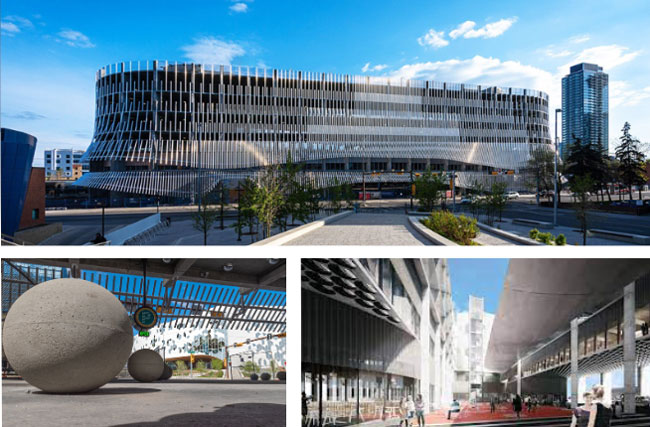
Calgary’s East Village has always been a magnetic neighbourhood, a gathering place that draws visitors to its vibrancy, invention, and beauty (more on that later). Platform Parkade is part of the revitalized East Village urban mosaic. The need for the new parkade location was identified in The City of Calgary’s East Village Area Redevelopment Plan: the creation of Platform Parkade allowed key East Village projects, including the Studio Bell, home of the National Music Centre and Central Library, to be created without standalone parking space. Platform Parkade was designed, developed, and built to address the evolving parking and transportation needs of the neighbourhood.
Throughout the planning process and 2.5 years of complex construction, we worked to create a blueprint for the future conversion of this unique space. Certain design elements will allow the space to be adapted into commercial or residential uses in the future when the needs of the community change.
For example:
- Increased floor-to-ceiling heights to accommodate mechanical, electrical and HVAC requirements for future uses (office and/or residential)
- Slightly sloped floors with no ramp system mean that if/when this building is converted to an alternate use only a minor topper will have to be installed to level out the space. Given that there is no ramp system, no ramps will have…
By Mathieu Verronneau, ing. & Paul Hanratty, MBA
Condominium Parking Garage Maintenance
Introduction
Your parking garage, if not maintained properly, can be one of the most expensive costs to your Condominium Corporation. Repairs to your garage can cost millions of dollars and create massive disruption over multiple years to the quiet enjoyment of your home and investment.
Background
The National Building Code Standard for Parking Structure construction and protection is CSA S413, “The Canadian Parking Standard”. This building code document provides guidance for designers and builders of parking structures. The current issue of this standard is a highly informative document but falls short in several areas related to protection of structural elements within parking structures. Deterioration of structural elements like columns, slabs, ledge beams etc., accelerates quickly if these elements are not protected. De-icing salts greatly accelerate the deterioration of unprotected structures.
One can find all details on this standard at:https://www.csagroup.org/store/product/S413-14/
Historic Building Process
Condominium structures are built by property developers and in most urban settings the parking garage is generally underground. Developers have a two-year obligation to the Condominium Corporation covering non-structural and non-life safety components of the building. This includes waterproofing structural elements in the parking garage and elsewhere. The short warranty period incentivizes some developers to install the minimum protection required by the building code. The current code only requires that elevated slabs be protected by an elastomeric membrane and traffic bearing surface. It does not require that the Architect or Designer of structural protection systems design for durability. This lack of guidance in the building code will be changed significantly with the new iteration of CSA S413:21, due to be released later in 2021. The new code will require that deck membrane systems be designed to receive four distinct levels of…


